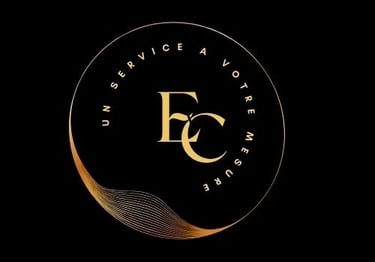Internal Linking for SEO: The 2025 Complete Guide (Strategy, Best Practices & Examples)
Discover how Zara’s internal linking and emotional storytelling redefine SEO in 2025—beyond link juice, AI Overviews, and rising CPC costs. In 2025, internal linking becomes strategy, not tactics!
WEBMARKETING
LYDIE GOYENETCHE
9/28/20257 min read


When you land on Zara.com, the journey feels effortless. Categories flow naturally—from “Women” to “New In,” “Shoes,” or “Coats.” But look closer, and you’ll see how every product connects back to editorial stories, seasonal campaigns, and lifestyle hubs. Zara isn’t just selling clothing; it’s building an ecosystem of meaning. Each internal link reinforces the brand’s identity as a curator of trends, not just a catalog of products.
Now imagine watching a video where Mickey Mouse opens the door to a magical world. That simple gesture does more than entertain—it signals the start of a narrative, pulling you into a universe where every path is intentional. Internal linking works the same way: each click should feel like stepping deeper into a brand’s story, not wandering aimlessly through disconnected pages.
In 2025, this symbolic dimension matters more than ever. Google’s new AI Overviews, Gemini integration, and SpamBrain updates no longer treat links as neutral pathways. They evaluate whether a site’s internal architecture reflects a coherent strategy, emotional resonance, and clear value hierarchy. A brand that links with intention is like Disney opening the gates to its universe—it tells both users and algorithms: Here’s what we stand for, and here’s why it matters.
From Old SEO to New SEO: Why Internal Linking Must Evolve
For years, SEO was dominated by technical tricks. Keyword density, backlinks, and siloed structures were enough to climb the SERPs. Internal linking played a role, but it was often treated mechanically: a way to push “link juice” toward commercial pages while leaving other sections of the site to stagnate. This approach worked in a web where algorithms measured relevance by volume and density. But in 2025, the game has changed.
Google’s recent updates—particularly the rollout of AI Overviews, the integration of Gemini, and the strengthening of SpamBrain—have transformed how internal linking is evaluated. It’s no longer about simply moving link equity from one page to another. It’s about proving that your site reflects real value, topical authority, and authentic engagement. Zyppy’s 2024 study of three million domains showed that fewer than 12% of websites had a coherent, value-driven linking structure. The rest were penalized not because they lacked links, but because their links didn’t tell a meaningful story.
The Rise of E-E-A-T and Interaction Signals
Google’s framework of E-E-A-T—Experience, Expertise, Authoritativeness, Trust—was once considered a secondary layer, relevant only to sensitive industries like health or finance. But with AI-driven indexing, it has become universal. Internal linking now plays directly into these signals: a product page without supporting content may appear thin, while the same product framed by guides, case studies, and customer stories tells a richer narrative.
What really makes the difference is interaction depth. Google is tracking how long users stay on your site, how many pages they explore, and whether they come back. A 2024 Forrester survey revealed that websites generating return visits above 30% saw nearly double the visibility in AI Overviews compared to those that did not. This means that internal linking is not just about search engines—it is about crafting journeys that encourage users to explore, linger, and engage.
From Link Juice to Value Flow
In the early days of SEO, internal linking was mostly about channeling “link juice.” Each link passed authority to another page, and the goal was to concentrate as much equity as possible on the few URLs meant to rank—usually product or service pages. This made sense when Google’s algorithm was still a mathematical equation based on PageRank distribution.
But in 2025, link juice has taken on a new meaning. Google doesn’t just measure the quantity of equity flowing between pages. It evaluates the quality of the pathways. Are users engaging? Do they stay longer when they follow an internal link? Do the connected pages reinforce each other around a coherent theme?
In other words, link juice is no longer a liquid you can simply pour where you want. It has become a value flow, shaped by user behavior and semantic alignment. A study by Semrush in late 2024 found that pages supported by clusters with high dwell time and topical relevance received 65% more visibility in AI Overviews than isolated commercial pages—even when both had similar backlink profiles.
This means that the new juice isn’t just about ranking potential; it’s about experiential gravity. Google is rewarding the pages that act as magnets, pulling users deeper into a journey. A case study from Backlinko showed that when underperforming pages were internally linked to long-form, interactive resources, organic traffic rose by 8% to 12% within three months—evidence that modern juice flows where attention and meaning converge.
Why Emotional Marketing Matters
This is where the symbolic and emotional dimension comes into play. Consider the moment when Mickey Mouse opens a door in a Disney video. The gesture is simple, but it carries immense emotional weight: it invites the audience into a world of imagination, signaling continuity and coherence. Internal linking, when done with intention, has the same effect. Each link should feel like a door into the brand’s universe, not just a technical bridge between pages.
Zara provides a perfect case study. Its product pages are not static—they evolve with the seasons. A coat in November may be linked to a winter editorial, a sustainability story, and a “how to style” guide. By March, the same category links shift toward spring collections. This dynamic linking reflects not only changes in inventory but also the emotional rhythm of fashion, keeping users engaged and encouraging repeat visits. Google sees these signals of freshness and interaction as indicators of authority and relevance.
The New Currency of SEO: Living Architecture
The shift from old SEO to new SEO is the shift from mechanics to meaning. Internal linking is no longer about pushing juice—it is about designing a living architecture that evolves with user intent, seasonal context, and emotional resonance. According to BrightEdge, pages supported by strategic internal links generate up to 40% longer session durations and 20% higher conversion rates than isolated pages. These are not marginal gains; they are survival margins in a search landscape dominated by AI synthesis and zero-click experiences.
In short, what Google rewards in 2025 is not the clever manipulation of structure, but the ability to align architecture with identity. Every internal link is a signal that says: “This is who we are, this is what we stand for, and this is how we create value.”
Zara and the U.S. Visibility Challenge: SEO Under Siege by AI Overviews
If Zara’s internal linking feels seamless, the brand still faces a larger challenge in markets like the United States. The fashion industry is one of the hardest hit by Google’s AI Overviews, where generative answers increasingly resolve user queries before a click ever reaches the website. BrightEdge data shows that in 2025, over 63% of B2C keyword searches in categories such as fashion, travel, and health are now covered by AI Overviews. For Zara, this means that generic queries like “best white sneakers 2025” or “spring dresses for women” often surface synthesized answers, product comparisons, and even style recommendations—without requiring a visit to Zara.com.
The impact on traffic is immediate. According to Similarweb, fashion e-commerce sites in the U.S. have seen an average 24% year-over-year drop in organic click-through rates, even when their rankings remain stable. The paradox is that Zara may still rank in the top three, but fewer users ever click through because Google has already provided a ready-made answer at the top of the page.
The natural reaction for many retailers has been to invest more heavily in Google Ads, but this too is becoming unsustainable. Data from Wordstream shows that the average cost per click in the apparel sector rose from $1.16 in 2023 to $1.74 in 2025, with premium seasonal keywords—like “summer dresses”—exceeding $3.20 per click in competitive U.S. markets. For fast-fashion players like Zara, whose margins depend on scale, this rising CPC represents a structural threat.
This is where internal linking regains its strategic role. Rather than relying solely on generic keywords, Zara must build living clusters that connect its products to editorial and symbolic narratives. A seasonal dress is not just linked to its product page; it connects to a summer campaign, a sustainability story, and perhaps even a cultural collaboration. These pathways give Google reasons to recognize Zara’s authority beyond the catalog, feeding AI Overviews with context while pulling users deeper into the Zara universe.
Just as Mickey Mouse opening a door signals the start of a story, Zara’s internal links must function as invitations—but this invitation only matters once a user actually steps inside. In the era of AI Overviews, emotional connection cannot occur on the SERP itself, since Google often absorbs the query before a click happens. To overcome this barrier, Zara must combine strong brand-driven strategies—newsletters, social media, direct brand searches—with a site architecture that amplifies value once the user arrives. The challenge is twofold: first, driving users to click despite AI Overviews, and second, turning each visit into an emotionally resonant journey that signals authority back to Google.
Conclusion: Beyond Rankings, Toward Meaning
The SEO landscape of 2025 is not the one we knew a decade ago. The days when internal linking was simply a matter of channeling “link juice” to product pages are gone. Google’s AI-driven systems now reward living architectures that evolve with user intent, demonstrate authority, and create journeys worth exploring.
The new paradigm shifts link juice from a purely mathematical flow into a value flow—a combination of semantic coherence, interaction depth, and emotional resonance. E-E-A-T principles transform every internal link into a signal of trust: does this brand provide real expertise, authentic experience, and meaningful authority?
Zara illustrates both the opportunity and the challenge. Its seasonal linking structures and editorial clusters show how fashion brands can build engagement and narrative continuity. Yet even a global giant faces reduced visibility when AI Overviews absorb generic queries and CPC costs rise. The lesson is clear: internal linking works best not in isolation, but as part of a holistic strategy where brand recognition, direct traffic, and cross-channel presence fuel discovery before the click, while symbolic storytelling sustains value after it.
The Mickey Mouse metaphor captures this evolution well. An internal link should not be a mechanical bridge but an invitation into a universe—one where meaning and identity are reinforced at every step. For businesses in both B2C and B2B, the challenge of SEO in 2025 is no longer to trick algorithms but to structure clarity, trust, and emotion so that both humans and machines understand why the brand matters.
SEO has become less about gaming the system and more about designing narratives of value. Those who build architectures aligned with their market identity will not only survive the era of AI Overviews, they will thrive—because their websites will no longer be maps of keywords, but maps of meaning.




EUSKAL CONSEIL
9 rue Iguzki alde
64310 ST PEE SUR NIVELLE
07 82 50 57 66
euskalconseil@gmail.com
Mentions légales: Métiers du Conseil Hiscox HSXIN320063010
Ce site utilise uniquement Plausible Analytics, un outil de mesure d’audience respectueux de la vie privée. Aucune donnée personnelle n’est collectée, aucun cookie n’est utilisé.